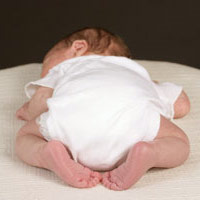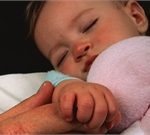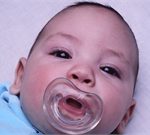Diaper Rash
 Seeing your baby’s bottom red and blistering, or listening to him/her scream and cry with every diaper change can be heartbreaking. But all babies, at one point or another, get diaper rash. There are things that can be done to help prevent it, and to treat it or make it less uncomfortable when it’s present, but you’ll feel better if you make peace with the fact that regardless of what you do, sometimes rashes will happen!
Seeing your baby’s bottom red and blistering, or listening to him/her scream and cry with every diaper change can be heartbreaking. But all babies, at one point or another, get diaper rash. There are things that can be done to help prevent it, and to treat it or make it less uncomfortable when it’s present, but you’ll feel better if you make peace with the fact that regardless of what you do, sometimes rashes will happen!
Cause of Diaper Rash
Both urine and stool are acidic and can cause skin breakdown, especially when you consider how sensitive a baby’s skin is. No matter how vigilant you are about changing diapers there will be times when the urine or stool sits up against your baby’s skin. Add this to the fact that there is a covering (the diaper) rubbing the stool and/or urine and holding it close to the skin, and you can see why diaper rash, at least occasionally, is inevitable. Once the skin is broken down there is the opportunity for bacteria and/or yeast to further complicate matters.
-A contact rash will be red irritated skin that might have blisters and skin breakdown with raw-looking areas and possibly bleeding.
If your child has diarrhea, or you have a newborn who has many liquid-y stools a day, then you should be ready to change diapers at least every 2 hours. You may want to use either a zinc based cream or an ointment (Vaseline) on the diaper area for every change as prevention. If your child has been sick recently or is on antibiotics leading to diarrhea you may want to give him/her acidophilus to minimize and shorten the duration of diarrhea.
Treatment
Keep the area dry and open as much as possible – leave your baby on a blanket without a diaper so that the area can air out. Let your toddler wear loose fitting cotton bottoms without diapers whenever you can.
Ointment – A&D, Vaseline, Aquaphor – these are all examples of ointments that will soothe the irritated area and provide a barrier when more stool/urine arrives.
Zinc based creams – Zinc helps the irritated broken skin to heal.
If your child has a very irritated and raw diaper area you can mix up your own concoction using: Maalox, Zinc cream & an ointment. Take a bit of each and mix together in a container until the consistency is right for spreading on the area. Leave this container on your changing table and apply to the diaper area at every diaper change until the rash is gone.
Allergies
If you notice that your baby/toddler has a flare in diaper rash after certain foods it is possible that s/he is allergic to this food. Some foods are acidic (tomatoes, citrus fruit) and are more likely to produce acidic stools– this is different from allergies. If you notice a pattern, speak with your doctor about this.
Yeast
If your child’s diaper rash is spreading into the folds of the groin (an area that usually does not touch the urine/stool) or is raised with clear borders you may be dealing with a yeast infection. You can apply clotrimazole cream (available over the counter) 3-4 times a day, over which you should still use the zinc and ointment, to help get rid of the yeast.
Bacteria
If the rash becomes blister-y or oozes a clear/yellowish liquid, it is likely infected. You should contact your doctor during regular office hours to discuss the possible need for a prescription ointment.
If your baby seems to have very sensitive skin you may want to use a zinc based cream or an ointment at every diaper change. This will help prevent diaper rash from starting. Remember that keeping the area dry is key to both prevention and healing. And keep in mind that Murphy’s Law seems to dictate that as soon as you walk out of the room and your child falls asleep s/he will poop. Which leaves you with the dilemma – wake him/her up for a diaper change or enjoy the respite and deal with skin in the morning? The joys of parenthood!
-Monique Araya, MD, FAAP
The medical information on this Web site is provided for educational purposes only. The information provided in this site, or through linkages to other sites, is not a substitute for medical or professional care, and you should not use the information in place of a visit, call consultation or the advice of your physician or other healthcare provider.
If you believe you have a medical emergency you should call 911 or your physician immediately. If you have any questions regarding your health or a medical condition, you should promptly consult your physician.
- Accidental Poisoning
- Bites and Stings
- Burns (and sunburns)
- Childhood Asthma
- Colic and Crying Babies
- Constipation in Children
- Cough & Cold
- Diaper Rash
- Diarrhea
- Ear Pain
- Fever
- Head Trauma and Head Injuries
- Kids and Allergies
- Lice
- Medication Dosages
- Nosebleeds in Children
- Pink Eye and Styes
- Rash
- Scrapes, Cuts and Stitches
- Sudden/Acute Abdominal Pain
- Treating a Common Cold Cough
- Vomiting and Nausea
 High Viral Loads Make Kids ‘Silent Spreaders’ of COVID-19
High Viral Loads Make Kids ‘Silent Spreaders’ of COVID-19 Clotting Tied to COVID-19 May Harm the Placenta
Clotting Tied to COVID-19 May Harm the Placenta ‘Kangaroo Care’ Has Big Health Benefits For Preemies
‘Kangaroo Care’ Has Big Health Benefits For Preemies Babies Are Spared Severe COVID-19 Symptoms
Babies Are Spared Severe COVID-19 Symptoms Sleepless Babies May Face Emotional Troubles as Kids
Sleepless Babies May Face Emotional Troubles as Kids